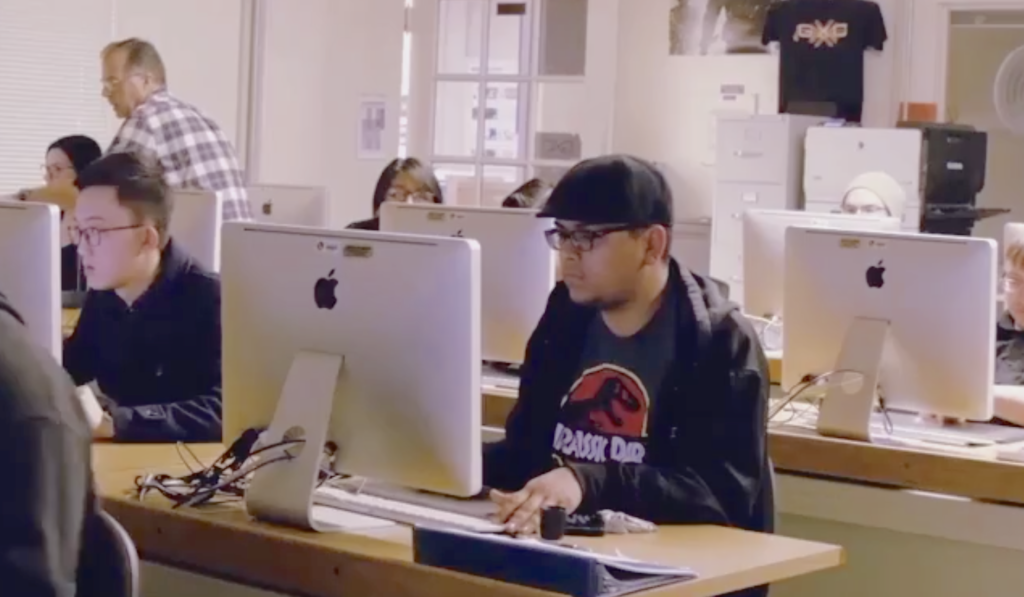There are a number of challenges facing the printing industry today. We have new tariffs on paper and aluminum, uncertainty over postal reform, and we’re all dealing with new and competing technologies. While all of these are areas of concern, in my opinion the biggest problem facing our industry is the aging population of our workers.
It seems Phil Kelley, President and CEO at Salem One, Inc. shares my concerns. In a meeting with members of his local printing association, Printing Industry of the Carolinas, Inc. (PICA), he took an informal survey and found that the average age of the employees of the PICA member companies was, in Phil’s words, “well north of 50.”
So here’s a group of printers nearly 3,000 miles away experiencing the same employment crisis as we are in Southern California. Our industry is in desperate need of young people who can replace maturing press operators, CSRs, sales reps, bindery workers, and company owners. I believe Phil may have an answer to our collective problem.
At the 2018 President’s Conference in San Antonio, Texas, Phil gave a presentation entitled Now Is the Best Time to Be a Printer…Ever! One point he made stood out above all others. We, as an industry, have let others define who we are.
If you asked the average person to define the printing industry, they’ll talk about ink on paper; newspapers, magazines, books, and business forms. And, when they hear that a newspaper or magazine has stopped publishing, they think the printing industry is dying. They never hear about the dozens of new titles that begin publishing every month. And, the truth is, our industry is so much more than newspapers and magazines.
Recently a PIASC employee was touting the benefits of membership to an owner of a new start-up company in the South Bay. This start-up was an online business that took people’s Instagram photos and printed them on various substrates including cloth, paper, and metal. They did this on Xerox and HP equipment. Yet, when asked if he’d like to join the association, the owner said, “Why would I join a printing association?” This guy didn’t even realize he was in the printing industry.
This brings us back to Phil’s point, how do we define our industry? Who are we? The answer to this question will impact how we recruit new employees. Young people, their parents, and their school counselors are looking for an industry that has a future. They want to belong to a modern industry that is exciting.
During his presentation, Phil said that every buyer of print, no matter what size, is in desperate need of “Communication Expertise.” That communication may come from a direct mail piece, an email blast, an online blog, a magazine, or any myriad of communication products.
The truth is, we are in the Corporate & Brand Communication Industry. Think about what a modern printer in the 21st Century provides for their clients.
- Printing
- IT Consulting
- Warehousing & Distribution
- Transportation & Logistics
- Interior design
- Direct mail
- Advertising
- Big data & analytics
As Phil continued his presentation, he explained that our industry is home to more corporate communication expertise than any industry in the world. And, the only thing keeping us, individually and as an industry, from seizing this title, is our own decision to define “who we are.” When you see yourself and your company as part of the Corporate & Brand Communication Industry, your opportunities are endless.
For example, there is a printer in Southern California that’s currently designing and creating wall coverings for a large computer game manufacturer. They are covering multiple walls on multiple floors of multiple buildings with characters from the game manufacturer’s franchises. On their wide format printer, they are producing thousands of feet of “ink on paper.” Are they a printing company or an interior design company?
Once we clarify and define who we are as an industry, imagine the endless possibilities we can offer to a young person looking for a career. The Corporate & Brand Communication Industry offers opportunities for young people interested in art, mathematics, or law. The industry needs graphic designers and prepress technicians, estimators and database managers, lobbyists and HR directors.
We, as an industry, need to help others understand what is involved in our industry. In his presentation, Phil clarified that he’s not asking to revolutionize the definition of print. He said that the industry has allowed the definition of print to devolve from its original meaning. He pointed out that Gutenberg’s invention allowed communication among the masses. It took power out of the hands of the elite and gave it to the people. And that’s what our industry is doing today.
Whether one person is communicating their love for their pet, by taking an Instagram picture and printing it on a pillow, or a corporation is notifying consumers about discount sales taking place at their stores nationwide, print is communication. That’s what we always have been and that’s what we are today.
The question is how do we get the greater community at large to see how print is part of their everyday experience? Like many things, the value of this physical form of communication might not ever be determined until it is absent. If we cannot attract the next generation of workers, a world without print could be on the horizon.



